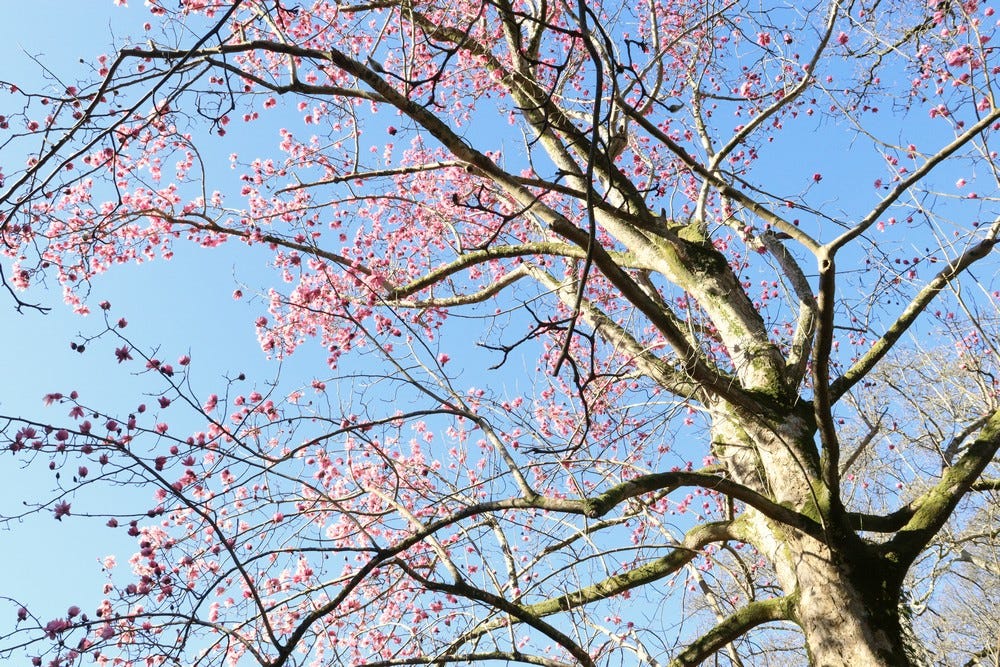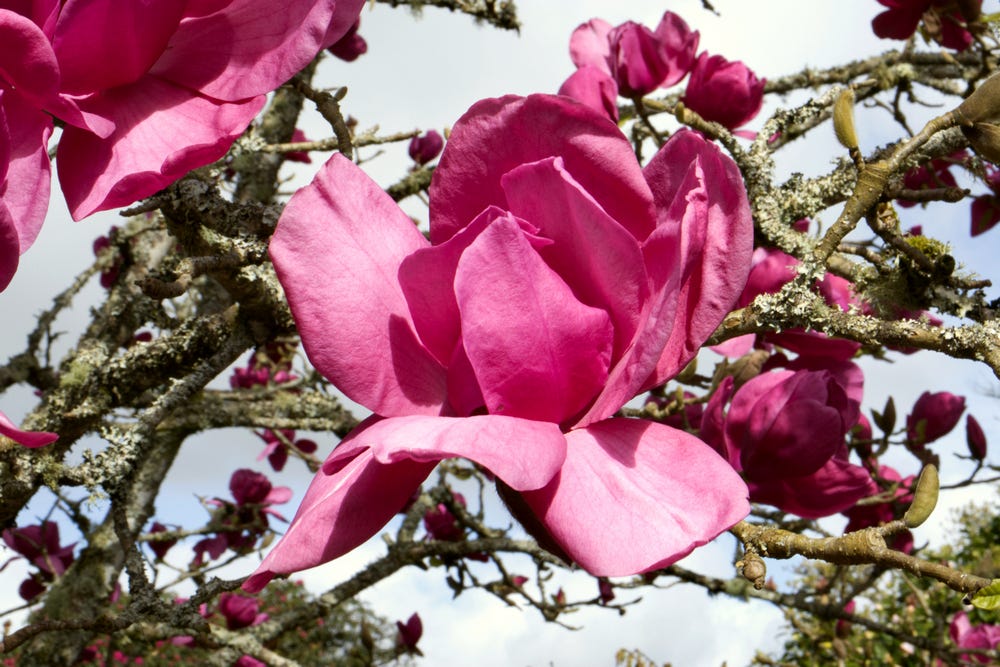I started the Plant Files with the idea that I should focus on plants for the larger gardens. This is, after all, what the Pen And Trowel Substack is about- gardening in larger spaces but without the budget and scope for some grand high-end project. Large scale, small budget.
Giving myself a broad remit gives me the option to explore a wide range of topics and write about a large number of plants. However it also leaves me with some conundrums; if I'm trying to write about a more grounded approach to larger gardens can I still talk about wonderfully impractical things too? The answer of course is yes; we shouldn't shut ourselves off from everything that we cannot own or do ourselves. Things outside our personal scopes remain fascinating and can still have relevance to our personal situations. It's with this in mind that I would like to discuss Magnolia campbellii.
Magnolias are found in two key areas: North America and East Asia. The American magnolias came to the UK first; while Magnolia virginiana isn't widely grown the big-flowered Magnolia grandiflora is fairly well known. However it was the introduction of the Asiatic species that caused the greatest excitement. American Gardens set up by large estates to grow plants from the New World were now becoming home to plants from China, Japan and India. I can't help feeling sorry for the American flora; a great number of American plants have contributed to our gardens. I guess it's to be expected given how much of Asia there is, and how diverse the plants that grow in the various countries and habitats are.
Asiatic magnolias are always impressive but the most regal of them all must be Magnolia campbellii. Vast trees tower above, their giant yet elegant flowers borne to naked branches as winter loses its grip and spring approaches. What's not to love?
Well...
Firstly even in cultivation these become giant trees.|A great number of larger gardens could accommodate this species at maturity, but to enjoy the species you really need to be able to step back and enjoy it from a distance. To do this you must have a lot of space.
Secondly this species is not quick to flower. Seedling-raised trees can take 30 years to flower well, although 25-30 years is probably more realistic. Grafted plants will flower a bit younger but to really have a good display you need to have a sizeable plant. Whichever way you look this species represents a great investment in time.
Thirdly, and probably the hardest thing to cope with, Magnolia campbellii flowers so early in the season that it's constantly at the mercy of frosts and storms. Imagine the heartache of waiting decades for your magnolia to reach flowering size only for its flowers to be destroyed by frost several years on the run. It doesn't bear thinking about.
Yet for the one year in five or so when everything works in your favour Magnolia campbellii is a wonder to behold. The sight of the huge flowers against a blue sky makes your heart sing, and without doubt a good flowering season for this magnolia in particular is one of the great wonders of the gardening world. In Cornwall spring is declared when the county's largest specimens of Magnolia campbellii each bear 50 open flowers- such is the draw of this species.
People, myself included, flock to the great gardens to enjoy the spectacle. If Magnolia campbellii is having a good season you drop everything and go and pay homage. The tree can be at its absolute peak one day and be ruined the next.
Magnolia campbellii represents the holy grail of magnolias. The size and number of the flowers, and their sheer quality, represent the very best that the Asiatic magnolias can offer. Yet those problems I mentioned- time to reach flowering age and the precarious nature of such an early season- still bug the species.
This is what magnolia breeders have been working so hard to address. Their aim has been to capture the essence of the great magnolia species in a form that is more garden-worthy. Am I suggesting then that Magnolia campbellii is not a good plant? No, but it's not unfair to plant a tree and expect it to perform within your lifetime. If the breeders can bring the spectacle of the giant species magnolias to a plant more likely to perform well for the people who plant them then this is a good thing.
It could be argued that the era of the great Asiatic species magnolias is over. Who now can guarantee, even remotely, that gardens will be passed from one generation of plant lovers to the next, let alone through several generations while a tree reaches maturity? The great family estates have become anachronistic in the modern age, and their future is by no means assured. There will always be wealth and there will always be people who spend some of that wealth on a big house with a big garden. How many will will have the patience to nurture a tree they might never see at its best?
This is why we must always cherish the spectacle of a large Magnolia campbellii; one day the big old original trees will come to their natural end, and when they do so we must hope that visionary gardeners have planted others to take their places. However the reality for the absolute majority of gardeners is that the modern hybrid magnolias will prove to be the better choices.








